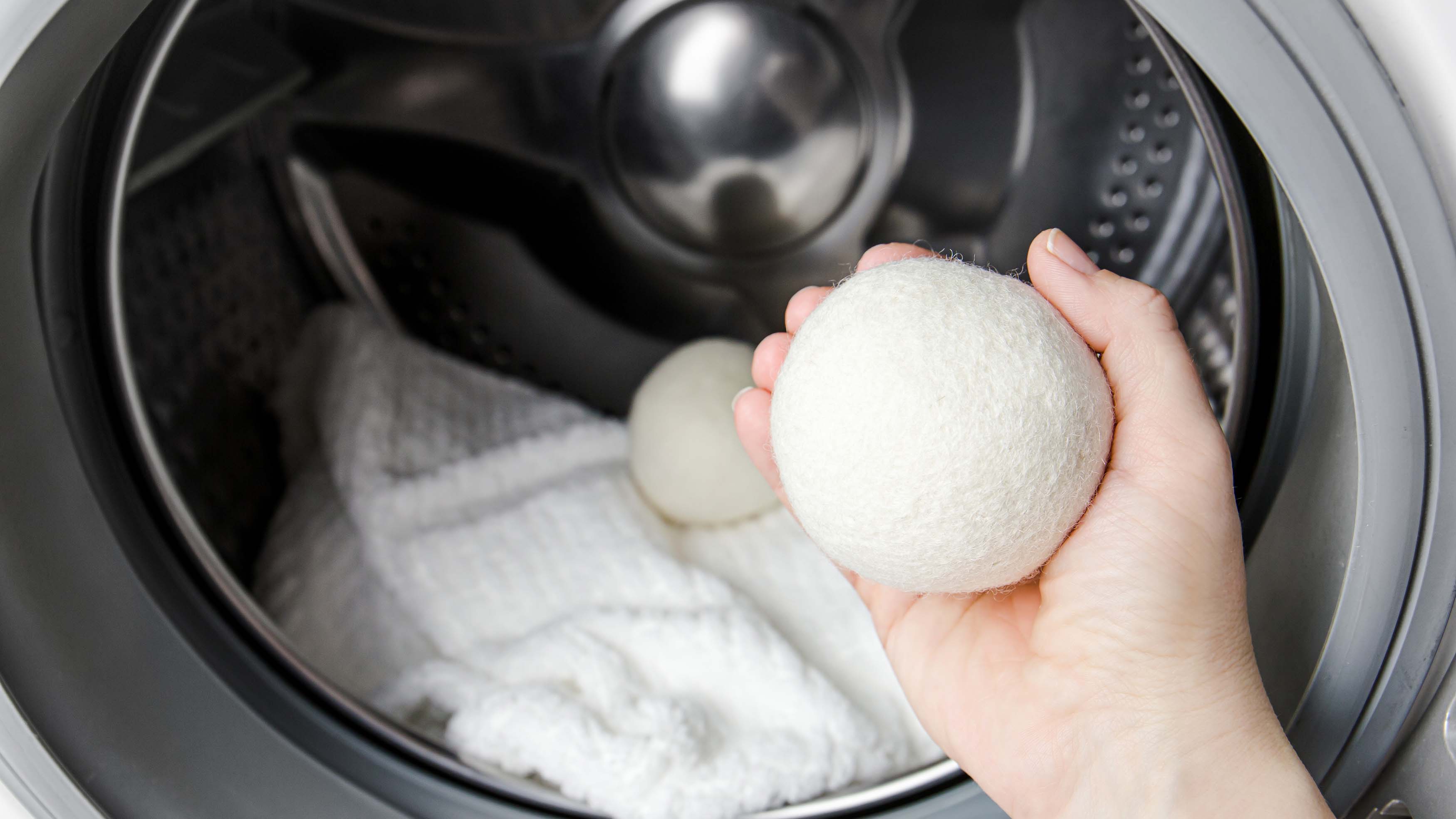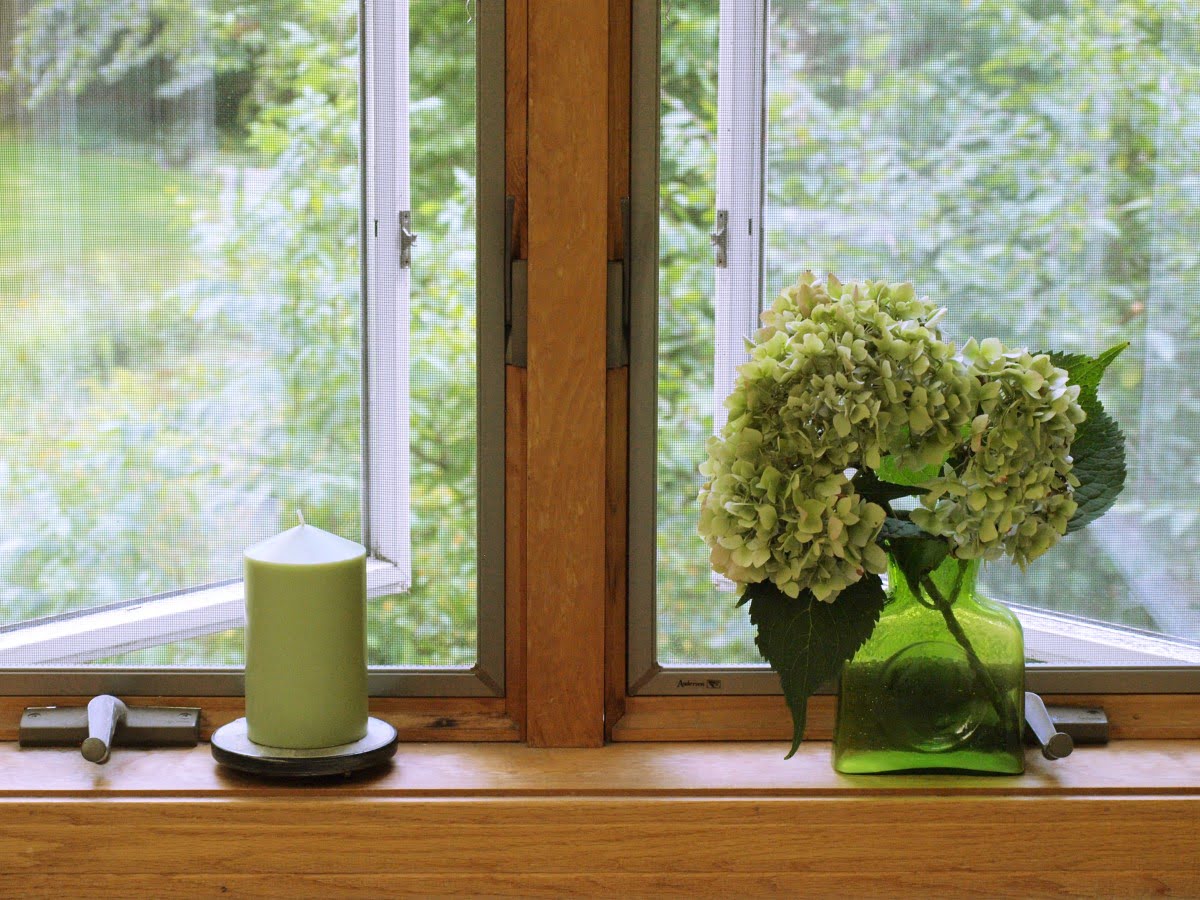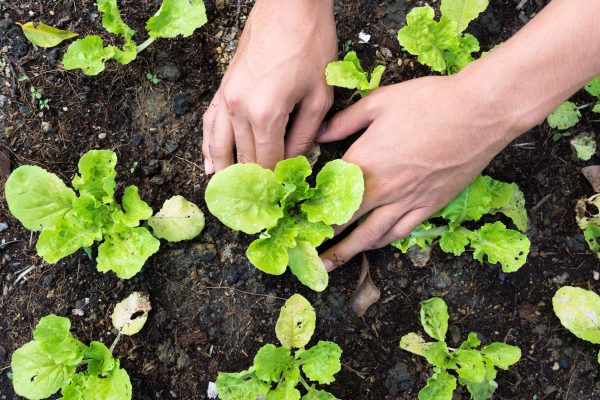Home>Interior Design>9 Ways To Be Sustainable At Home


Interior Design
9 Ways To Be Sustainable At Home
Modified: January 6, 2024
Discover 9 effective ways to incorporate sustainable interior design practices into your home for a greener and more eco-friendly living space.
(Many of the links in this article redirect to a specific reviewed product. Your purchase of these products through affiliate links helps to generate commission for Storables.com, at no extra cost. Learn more)
Introduction
Welcome to the world of sustainable interior design! In today’s environmentally-conscious society, it has become increasingly important to incorporate sustainable practices into every aspect of our lives, including our homes. With a growing awareness of the impact of our choices on the planet, many people are seeking ways to make their homes more eco-friendly and reduce their carbon footprint.
The concept of sustainable interior design goes beyond just aesthetics. It involves making conscious choices that promote energy efficiency, reduce waste, and minimize the use of harmful materials. By creating a sustainable living environment, not only are we contributing to the preservation of the planet, but we are also creating a healthier and more nurturing space for ourselves and our loved ones.
In this article, we will explore nine ways to be sustainable at home, providing practical tips and ideas that you can easily implement. These tips will help you transform your living space into a haven of sustainability, where you can enjoy a harmonious blend of functionality, style, and eco-consciousness.
Key Takeaways:
- Transform your home into a sustainable haven by reducing energy consumption, conserving water, and practicing proper waste management. Embrace eco-friendly materials, green cleaning practices, and energy-saving technology for a greener lifestyle.
- Support local and sustainable food sources, cultivate a green thumb through gardening and composting, and choose sustainable transportation methods to contribute to a more sustainable and environmentally-friendly lifestyle. Every small change makes a big difference in creating a greener future.
Read more: What Is Sustainable Construction
Reduce Energy Consumption
Reducing energy consumption is one of the most effective ways to make your home more sustainable. By conserving energy, you can not only lower your utility bills but also decrease your carbon footprint.
Here are some practical ways to reduce energy consumption:
- Switch to LED bulbs: LED bulbs are more energy-efficient and have a longer lifespan compared to traditional incandescent bulbs. By replacing your old bulbs with LEDs, you can significantly reduce your energy usage.
- Unplug electronics when not in use: Many electronic devices continue to consume energy even when they’re turned off. To prevent standby power waste, unplug your devices or use power strips to easily turn off multiple electronics at once.
- Use natural lighting: Take advantage of natural sunlight by opening your curtains and blinds during the day. This will reduce the need for artificial lighting and positively impact your energy consumption.
- Invest in energy-efficient appliances: When it’s time to replace your appliances, opt for energy-efficient models. Look for appliances with the Energy Star label, as they are designed to consume less energy without sacrificing performance.
- Insulate your home: Proper insulation plays a significant role in reducing energy wastage. Insulate your walls, attic, and windows to prevent heat loss during the colder months and keep your home cool during summer.
- Utilize smart thermostats: Smart thermostats allow you to automate and control the heating and cooling of your home. By optimizing temperature settings and scheduling, you can conserve energy when you’re away from home or asleep.
- Optimize air conditioning usage: Instead of relying solely on air conditioning, use natural ventilation techniques, such as opening windows or using fans, to cool your home. This will help reduce your reliance on energy-intensive cooling systems.
- Consolidate appliances: Grouping appliances that generate heat, such as ovens, dishwashers, and washing machines, can help optimize energy usage. Running these appliances together during off-peak hours minimizes the strain on your electrical system.
- Make use of power-saving features: Many electronic devices and appliances offer power-saving features that can help reduce energy consumption. Enable these features whenever possible to maximize energy efficiency.
By implementing these energy-saving strategies, you can significantly reduce your home’s energy consumption and contribute to a more sustainable future. Not only will you save money in the long run, but you will also play your part in preserving the planet for future generations.
Conserve Water
Water is a precious resource, and conserving it is essential for both the environment and our own well-being. By adopting water-saving practices in our homes, we can make a significant impact on water conservation.
Here are some effective ways to conserve water:
- Fix leaks promptly: A leaking faucet or toilet can waste a substantial amount of water over time. Regularly check for and repair any leaks in your plumbing system to prevent water wastage.
- Install water-efficient fixtures: Replace old, water-guzzling fixtures with low-flow options. Install water-efficient showerheads, faucets, and toilets to reduce water usage without sacrificing performance.
- Take shorter showers: Showers can consume a large amount of water, especially if they’re long and luxurious. Try to limit your shower time and consider using a shower timer to keep track of your usage.
- Collect rainwater: Harvesting rainwater is a great way to reduce your reliance on municipal water supplies. Install rain barrels or tanks to collect rainwater, which can then be used for watering plants or other non-potable purposes.
- Water plants wisely: Water your plants during the early morning or late evening to minimize evaporation. Use a drip irrigation system or a watering can to deliver water directly to the roots, avoiding runoff.
- Choose drought-resistant plants: Opt for plants that are well-suited to your climate and require less water to thrive. Native plants and succulents are excellent choices as they are adapted to local conditions and require minimal watering.
- Reuse water when possible: Instead of pouring unused water down the drain, find ways to reuse it. For example, capture the water used to rinse fruits and vegetables and use it to water your plants.
- Use a dishwasher efficiently: When using the dishwasher, make sure to run full loads to maximize efficiency. Skip the pre-rinse cycle if your dishwasher is capable of handling slightly soiled dishes.
- Opt for efficient laundry practices: Only run the washing machine with full loads of laundry and choose the appropriate water level setting based on load size. Consider using a front-loading machine, as it uses less water than top-loading models.
- Educate household members: Teach your family members about the importance of water conservation and encourage them to practice water-saving habits. Simple actions like turning off the faucet while brushing teeth can make a significant difference.
By incorporating these water-conservation techniques into your daily routine, you can contribute to water preservation efforts and create a more sustainable home. Every drop of water saved counts towards ensuring a better future for our planet.
Practice Proper Waste Management
Proper waste management is crucial for maintaining a sustainable and clean living environment. By adopting responsible waste management practices, we can reduce landfill waste, promote recycling, and minimize our impact on the planet.
Here are some ways to practice proper waste management:
- Reduce waste at the source: Before making a purchase, consider if you truly need the item. Opt for products with minimal packaging or choose reusable alternatives instead of disposable ones. By reducing waste at the source, you automatically decrease the amount of waste that ends up in landfills.
- Implement recycling systems: Set up a recycling station in your home with clearly labeled bins for different types of recyclable materials such as paper, plastic, glass, and metal. Ensure that items are properly cleaned and sorted before putting them in the recycling bin.
- Compost organic waste: Instead of throwing away food scraps and yard trimmings, start a compost pile or use a compost bin. Composting allows organic waste to break down naturally and turns it into nutrient-rich soil that can be used for gardening.
- Practice responsible e-waste disposal: Dispose of electronic waste (e-waste) properly by taking it to designated recycling centers or participating in e-waste collection events. This ensures that hazardous materials in electronic devices are handled safely and recycled appropriately.
- Donate or repurpose items: Instead of discarding items that are still in usable condition, consider donating them to charitable organizations or giving them a new life through creative repurposing. This reduces waste and benefits others in need.
- Avoid single-use items: Minimize your consumption of single-use items like disposable plastic bags, straws, and water bottles. Opt for reusable alternatives such as cloth bags, stainless steel straws, and refillable water bottles.
- Responsible hazardous waste disposal: Properly dispose of hazardous materials like chemicals, batteries, and fluorescent light bulbs by taking them to designated collection centers. These items require special handling due to their potential harm to the environment if not disposed of correctly.
- Educate and involve your community: Spread awareness about proper waste management practices within your community. Encourage others to adopt responsible waste management habits, and consider organizing community clean-up events or recycling drives.
- Purchase recycled and upcycled products: Support the recycling industry by purchasing products made from recycled materials. Additionally, consider purchasing upcycled or second-hand items, which help reduce demand for new production and save valuable resources.
- Stay informed about local waste regulations: Keep up-to-date with your local waste management regulations to ensure compliance and to take advantage of any recycling programs or initiatives available in your area.
By practicing proper waste management, we can minimize the amount of waste that goes to landfills, conserve resources, and protect the environment for future generations. Together, we can make a significant impact in creating a more sustainable world.
Opt for Sustainable Transportation Methods
Transportation is a major contributor to greenhouse gas emissions and air pollution. By choosing sustainable transportation methods, we can reduce our carbon footprint and contribute to a cleaner and healthier environment.
Here are some ways to incorporate sustainable transportation into our daily lives:
- Walk or bike whenever possible: For short distances, opt for walking or cycling instead of driving. Not only does this reduce emissions, but it also has the added benefit of improving your physical health.
- Utilize public transportation: Take advantage of public transportation options such as buses, trams, or trains. Public transportation systems are designed to accommodate multiple passengers, reducing the number of vehicles on the road and the associated emissions.
- Carpool or rideshare: Share rides with coworkers, friends, or neighbors who are traveling in the same direction. Carpooling and ridesharing reduce the number of vehicles on the road and allow for more efficient use of transportation resources.
- Invest in electric or hybrid vehicles: If you’re in the market for a new vehicle, consider purchasing an electric or hybrid car. These vehicles produce fewer emissions and have lower fuel consumption compared to traditional gasoline-powered cars.
- Plan efficient routes: When running errands or going on trips, plan your routes in a way that minimizes the distance traveled. This not only saves time but also reduces the amount of fuel consumed.
- Prioritize remote work and telecommuting: Whenever possible, work remotely or telecommute to reduce the need for daily commuting. This helps decrease traffic congestion and lowers carbon emissions from transportation.
- Support sustainable transportation infrastructure: Advocate for the development of sustainable transportation infrastructure in your community, such as bike lanes, pedestrian-friendly pathways, and electric vehicle charging stations.
- Offset carbon emissions: If sustainable transportation options are limited, consider offsetting your carbon emissions by supporting reputable carbon offset programs. These programs fund projects that aim to reduce emissions and promote environmental sustainability.
- Take advantage of eco-friendly travel alternatives: When traveling long distances, choose eco-friendly options such as trains or buses instead of airplanes. Trains have a lower carbon footprint compared to air travel, and buses offer a more energy-efficient mode of transportation.
- Encourage others to adopt sustainable transportation habits: Spread awareness about the importance of sustainable transportation and inspire others to make eco-conscious choices. Share your experiences and tips with friends, family, and colleagues to inspire positive change.
By opting for sustainable transportation methods, we can significantly reduce our contribution to air pollution and greenhouse gas emissions. Every effort counts when it comes to creating a more sustainable and environmentally-friendly transportation system.
Read more: Which Way To Face Insulation
Embrace Green Cleaning Practices
When it comes to keeping our homes clean and fresh, it’s important to consider the impact of our cleaning products on the environment and our health. Traditional cleaning products often contain harsh chemicals that can be harmful to the planet and contribute to indoor air pollution. By embracing green cleaning practices, we can maintain a clean home while minimizing our environmental footprint.
Here are some ways to embrace green cleaning practices:
- Use natural cleaning solutions: Replace chemical-laden cleaners with natural alternatives. Ingredients like vinegar, baking soda, lemon juice, and essential oils can be used to create effective and eco-friendly cleaning solutions for various surfaces in your home.
- Read labels carefully: When purchasing cleaning products, read labels to identify eco-friendly and non-toxic options. Look for products that are free from harsh chemicals like phosphates, chlorine, and ammonia.
- Make your own cleaning products: DIY cleaning products are not only cost-effective but also allow you to control the ingredients. Simple mixtures using ingredients like vinegar, water, and essential oils can effectively clean surfaces, floors, and windows.
- Avoid single-use cleaning items: Reduce waste by avoiding single-use cleaning items like disposable wipes. Opt for reusable alternatives such as microfiber cloths or washable mop pads that can be laundered and used multiple times.
- Choose eco-friendly cleaning tools: Look for cleaning tools made from sustainable materials like bamboo or recycled plastic. Eco-friendly tools such as natural bristle brushes and plant-based scrubbers are more sustainable alternatives to their traditional counterparts.
- Properly dispose of cleaning waste: When disposing of cleaning waste, make sure to do so responsibly. Rinse out containers before recycling, and consider reusing or repurposing empty cleaning product bottles when possible.
- Avoid air pollution: Traditional cleaning products often release volatile organic compounds (VOCs) into the air, contributing to indoor air pollution. Opt for green cleaning products with low or no VOCs to improve indoor air quality.
- Choose eco-friendly laundry practices: Select environmentally-friendly laundry detergents and stain removers that are biodegradable and free from harmful chemicals. Wash laundry in cold water whenever possible to save energy.
- Dispose of cleaning water properly: When mopping floors or cleaning surfaces with water, avoid dumping the water directly into drains or the environment. Dispose of the water in sinks or toilets connected to wastewater treatment facilities.
- Spread awareness: Share your green cleaning practices with others. Encourage friends, family, and community members to adopt eco-friendly cleaning habits and be mindful of the products they use.
By embracing green cleaning practices, we can create a healthier home environment, reduce our exposure to toxins, and minimize our impact on the environment. Small changes in cleaning routines can make a big difference in promoting sustainability and well-being.
Use energy-efficient light bulbs to reduce electricity usage. LED bulbs use less energy and last longer than traditional incandescent bulbs, saving you money and reducing your environmental impact.
Choose Eco-friendly Materials and Products
Choosing eco-friendly materials and products is a fundamental aspect of sustainable interior design. By opting for environmentally-friendly options, we can reduce our carbon footprint, conserve natural resources, and promote a healthier living environment for ourselves and future generations.
Here are some ways to choose eco-friendly materials and products:
- Opt for sustainably sourced materials: Look for materials that come from renewable sources or have been responsibly harvested. Examples include bamboo, cork, reclaimed wood, and recycled materials.
- Choose natural and non-toxic materials: Avoid materials that contain harmful chemicals, such as formaldehyde or volatile organic compounds (VOCs). Opt for paints, adhesives, and finishes that are water-based and low in VOCs.
- Select energy-efficient appliances: When choosing appliances, look for energy-efficient models that have earned the Energy Star label. These appliances consume less energy, which reduces greenhouse gas emissions and saves on utility bills.
- Consider sustainability certifications: Look for certifications like Forest Stewardship Council (FSC) certification for wood products or Cradle to Cradle certification for products that meet stringent environmental and social responsibility criteria.
- Support local artisans and manufacturers: Choose locally-made products to reduce the carbon footprint associated with transportation and to support local businesses and artisans. This helps promote a more sustainable and resilient economy.
- Invest in durable and long-lasting products: Prioritize quality over quantity and choose products that are built to last. Durable items require less frequent replacement, reducing waste and the overall environmental impact.
- Consider organic and natural textiles: When selecting fabrics for upholstery, bedding, and window treatments, choose organic cotton, linen, or hemp. These materials are grown without the use of harmful pesticides or chemical fertilizers.
- Use salvaged or recycled materials: Embrace the beauty of reclaimed materials and incorporate salvaged or recycled elements into your design. This gives new life to materials that would otherwise end up in landfills.
- Avoid single-use or disposable products: Opt for reusable alternatives to single-use or disposable items. For example, use cloth napkins instead of paper ones and choose rechargeable batteries instead of disposable ones.
- Research product life cycle: Before purchasing a product, consider its life cycle. Assess the environmental impact during production, use, and disposal. Choose products that have a minimal impact throughout their life cycle.
By consciously selecting eco-friendly materials and products, we can create a more sustainable living space that aligns with our values of environmental stewardship. Each thoughtful choice contributes to a greener future and a healthier planet.
Implement Energy-saving Technology
Implementing energy-saving technology in your home is a great way to reduce energy consumption and promote sustainability. With advancements in technology, there are now various innovative solutions available to help make your home more energy-efficient.
Here are some energy-saving technologies to consider:
- Smart thermostats: Smart thermostats learn your daily routines and adjust temperature settings accordingly. They can automatically decrease heating or cooling when you’re away and optimize energy usage for better efficiency.
- Energy-efficient lighting: Switching to LED bulbs not only saves energy but also lasts longer than traditional incandescent bulbs. You can also install motion sensors or smart lighting systems to control lighting usage in different areas of your home.
- Solar panels: Installing solar panels allows you to harness clean and renewable energy from the sun. Solar energy can help power your home, significantly reducing your reliance on non-renewable energy sources and lowering your electricity bills.
- Energy-efficient windows and insulation: Upgrading to energy-efficient windows and improving insulation can reduce heat loss in the winter and heat gain in the summer. This helps maintain a comfortable temperature indoors and reduces reliance on heating and cooling systems.
- Energy-efficient appliances: When it’s time to replace your appliances, opt for energy-efficient models with the Energy Star label. These appliances consume less energy, contributing to significant savings on your energy bills.
- Smart power strips: Smart power strips automatically turn off power to devices on standby mode or during specific hours, reducing the energy consumed by idle electronics.
- Home energy monitoring systems: Installing energy monitoring systems allows you to track your home’s energy usage in real-time. This knowledge helps you identify areas where energy is being wasted and make informed decisions on energy-saving practices.
- Programmable timers and sensors: Programmable timers and sensors can control the operation of lights, fans, and other electrical devices. They ensure that they are only running when needed, saving energy and reducing utility costs.
- High-efficiency HVAC systems: Upgrading to a high-efficiency heating, ventilation, and air conditioning (HVAC) system helps optimize energy consumption for temperature control in your home.
- Home energy storage: Consider home energy storage systems, such as batteries, that allow you to store excess energy generated from renewable sources like solar panels. This energy can be used during peak hours or in case of power outages.
By implementing energy-saving technology in your home, you can significantly reduce your energy consumption, lower your utility bills, and minimize your environmental impact. These technologies not only make your home more sustainable but also enhance your overall comfort and convenience.
Support Local and Sustainable Food Sources
Choosing to support local and sustainable food sources is not only beneficial for your health but also for the environment and the local community. By making conscious choices about where and how you source your food, you can contribute to a more sustainable food system.
Here are ways to support local and sustainable food sources:
- Buy from local farmers markets: Shopping at local farmers markets allows you to support local farmers and growers. By buying directly from them, you reduce the carbon footprint associated with transporting food long distances.
- Join a community-supported agriculture (CSA) program: CSA programs connect consumers directly with local farmers. By becoming a member, you receive a share of the farm’s produce throughout the growing season, supporting local agriculture and enjoying fresh, seasonal produce.
- Grow your own food: Cultivating a garden, whether in your backyard or in pots on a balcony, allows you to grow your own fruits, vegetables, and herbs. This not only reduces your reliance on store-bought produce but also promotes sustainable and organic gardening practices.
- Choose organic and sustainable farming practices: Opt for organic food that is grown without the use of synthetic pesticides and fertilizers. Look for certifications like USDA Organic to ensure the food meets certain environmental and animal welfare standards.
- Reduce food waste: Minimize food waste by meal planning, properly storing perishable items, and composting leftover food scraps. Food waste contributes to greenhouse gas emissions, so every effort to reduce waste is a step towards a more sustainable food system.
- Support sustainable seafood choices: When purchasing seafood, choose those that are sustainably sourced and caught. Look for certifications such as Marine Stewardship Council (MSC) or Aquaculture Stewardship Council (ASC) to ensure the seafood is harvested responsibly.
- Reduce meat consumption: Consider reducing your meat consumption or incorporating more plant-based meals into your diet. Plant-based diets have a lower environmental impact and can help conserve resources and reduce greenhouse gas emissions.
- Minimize packaged and processed foods: Opt for fresh, whole foods instead of packaged and processed options. Packaged foods often require more resources for production and generate more waste.
- Support local food initiatives: Get involved in local food initiatives, such as community gardens, food co-ops, and food rescue programs. These initiatives promote sustainable practices and improve access to fresh and healthy food in your community.
- Educate yourself and others: Stay informed about sustainable food practices and share your knowledge with others. Engage in conversations about the importance of supporting local and sustainable food sources to inspire positive change.
By supporting local and sustainable food sources, you not only contribute to a more sustainable food system but also enjoy fresher, healthier, and more nutritious food. Your choices have the power to make a significant impact on the environment, local economies, and the overall well-being of communities.
Cultivate a Green Thumb: Gardening and Composting
Gardening and composting are wonderful ways to connect with nature, foster sustainability, and create a thriving ecosystem within your own backyard. By cultivating a green thumb, you can grow your own food, beautify your living space, and contribute to a more sustainable lifestyle.
Here are some tips for gardening and composting:
- Start a vegetable or herb garden: Cultivate a garden to grow your own organic fruits, vegetables, and herbs. Choose plants that are well-suited for your climate and practice organic gardening methods, using natural fertilizers and pest control techniques.
- Create pollinator-friendly spaces: Plant flowers and shrubs that attract pollinators like bees, butterflies, and birds. These essential creatures play a vital role in pollination and contribute to a healthy and diverse ecosystem.
- Practice water-wise gardening: Conserve water by using drip irrigation systems, watering plants in the early morning or late evening, and mulching around plants to retain moisture. Collect rainwater for irrigation purposes.
- Use compost to enrich soil: Start a compost pile or use a compost bin to transform kitchen scraps, yard waste, and other organic materials into nutrient-rich compost. Use this compost to enrich your soil and reduce the need for synthetic fertilizers.
- Plant native and drought-resistant species: Choose plants that are native to your region as they are adapted to local conditions and require less water and maintenance. Drought-resistant species are not only sustainable but also help conserve water resources.
- Practice vermiculture: Consider setting up a worm composting system, also known as vermiculture. Red worms help break down organic waste quickly, producing nutrient-rich worm castings, which make excellent natural fertilizer for your plants.
- Grow your own pollinator-friendly plants: Plant flowers and herbs specifically known for attracting pollinators, such as lavender, sunflowers, marigolds, and bee balm. These plants create a welcoming environment for pollinators to thrive.
- Practice crop rotation: Rotate crops each season to prevent nutrient depletion and minimize the risk of pests and diseases. This sustainable gardening technique helps maintain a healthy balance in your garden and ensures optimal plant growth.
- Companion planting: Utilize companion planting techniques by growing mutually beneficial plants together. For example, planting marigolds alongside tomatoes helps repel pests naturally, reducing the need for chemical pesticides.
- Minimize synthetic inputs: Reduce the use of synthetic fertilizers, pesticides, and herbicides in your garden. Instead, explore natural alternatives such as compost, organic pest control methods, and beneficial insects.
Gardening and composting not only allow you to enjoy the beauty of nature and fresh produce but also play a significant role in creating a sustainable lifestyle. By practicing these gardening and composting techniques, you are contributing to the health of the environment, reducing waste, and nurturing a greener future.
Conclusion
Creating a sustainable home environment is not only beneficial for the planet but also for our own well-being. By implementing sustainable practices in interior design, we can contribute to a healthier and more eco-conscious lifestyle.
In this article, we have explored nine ways to be sustainable at home. From reducing energy consumption to supporting local and sustainable food sources, each practice plays a crucial role in promoting sustainability and reducing our carbon footprint.
By reducing energy consumption, whether through energy-saving technology or mindful habits, we can significantly decrease our environmental impact and save on utility bills. Conserving water and practicing proper waste management help us minimize our water usage and reduce the amount of waste that goes to landfills.
Choosing eco-friendly materials and products not only supports sustainable practices but also ensures our homes are free from harmful chemicals. Embracing green cleaning practices allows us to maintain a clean and healthy living space without compromising the environment.
Opting for sustainable transportation methods, supporting local and sustainable food sources, and cultivating a green thumb through gardening and composting all contribute to a more sustainable lifestyle. These practices help reduce carbon emissions, support local communities, and promote a healthier environment.
By embracing these sustainable practices, we take small but meaningful steps towards building a greener future. Every choice we make counts, and together, we can create homes that are not only aesthetically pleasing but also environmentally responsible.
Let’s continue to prioritize sustainability in interior design and inspire others to join us in creating homes that are beautiful, functional, and sustainable for generations to come. Together, we can make a positive impact on the planet and contribute to a more sustainable future.
Frequently Asked Questions about 9 Ways To Be Sustainable At Home
Was this page helpful?
At Storables.com, we guarantee accurate and reliable information. Our content, validated by Expert Board Contributors, is crafted following stringent Editorial Policies. We're committed to providing you with well-researched, expert-backed insights for all your informational needs.














0 thoughts on “9 Ways To Be Sustainable At Home”